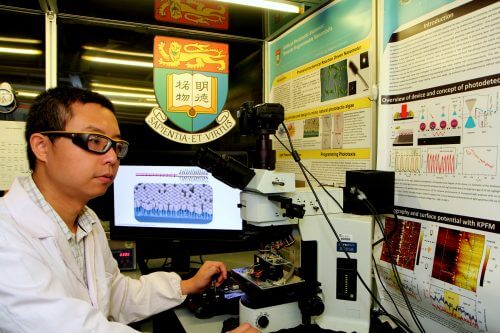Chemists have created tiny swimmers that can be controlled by light

Microscopic machines that move in the bloodstream and carry drugs or perform small surgeries have been the dream of scientists for decades. In the last 15 years, researchers have created various models of microscopic machines whose propulsion is based on chemical reactions, magnetism or thermal fluctuations, but these machines often move randomly. The main challenge is to guide them towards the target site where they are needed, he says Jinyu Tang, Associate Professor of Chemistry at the University of Hong Kong. Tang and his research colleagues scored a breakthrough on this front when they created a microscopic swimmer that could be easily and precisely steered by light.
as Reported In the December 2016 issue of the journal Nature Nanotechnology, Tang's research team built microscopic particles shaped like a bottle-cleaning brush, with silicon handles and "bristled" heads made of titanium dioxide (TiO2). Both materials absorb photons and therefore, when shining on such a particle, the stem emits negative hydroxide ions (-OH) and the bristles produce positive hydrogen ions (+H or +H3O). In this situation, where the electric charge is unevenly distributed, the ions move to balance the charge and sweep fluid in their wake. The movement of the pigeons causes the tiny swimmer to move like an arrow towards the light, with the handle facing forward.
In a test experiment, team members placed such a swimmer in a liquid, on a glass plate, and guided it using ultraviolet light along a path in the shape of the word "nano". The tiny 11 micron long swimmer moved at a rate of about a millimeter in two minutes. This is a slow rate for medical applications, but according to Tang, he and his colleagues are now developing new designs that will give swimmers higher speeds. "This unique method for precise control of speed and direction of movement is amazing," he says Samuel Sanchez, a nanorobotics expert at the Max Planck Institute for Intelligent Systems in Stuttgart, Germany, who was not involved in the research conducted by Tang and his colleagues.
The team's work offers a glimpse of a future in which out-of-body doctors will guide medical robots through a patient's body using a focused beam of light, Tang says. These devices are currently activated by ultraviolet light, but the researchers are working on developing microscopic swimmers that will respond to near-infrared radiation, capable of penetrating a few centimeters deep into tissues. For applications in deeper places in the body, surgeons will be able to control the robotic particles using optical fibers.
